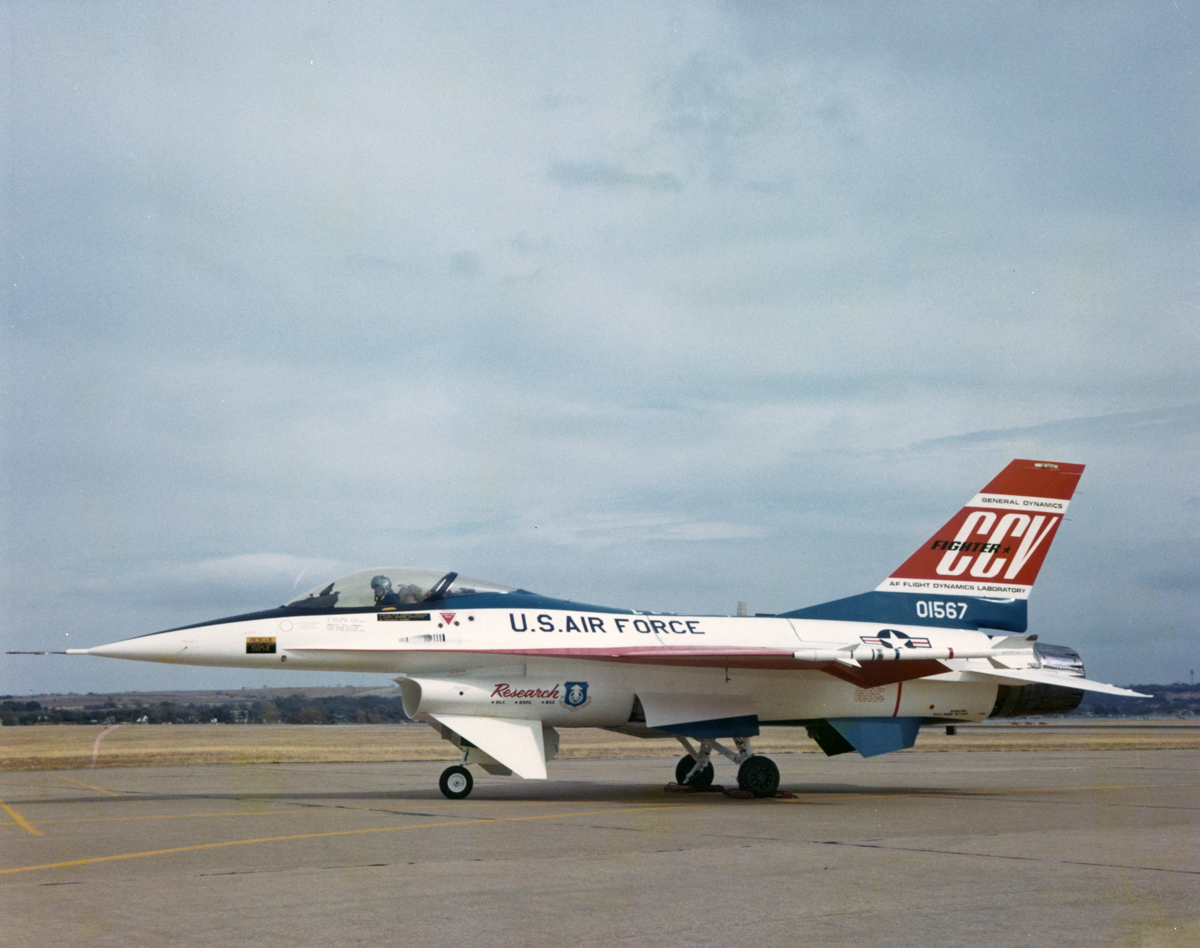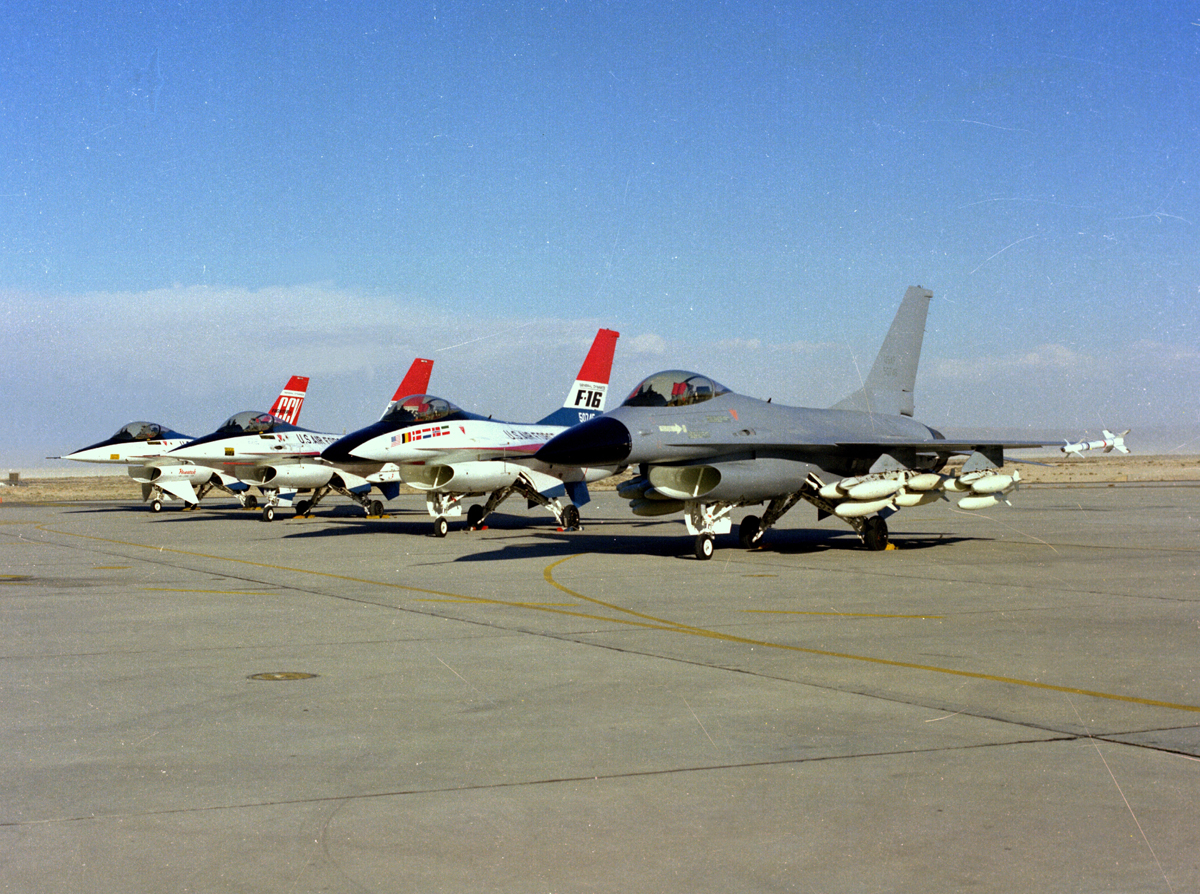“Flying formation on the F-16 CCV aircraft was a terrifying experience since it could do flat turns which robbed the wingman of important visual cues such as bank angle,” Phil Oestricher, General Dynamics test pilot
The first YF-16 (#72-1567) was rebuilt in December 1975 to become the USAF Flight Dynamics Laboratory’s Control Configured Vehicle (CCV).
The flight control surfaces of the F-16 CCV must be “decoupled” in order for them to function independently. This strategy makes it possible to perform uncommon movements like turning the airplane without banking it. The capacity to move in one plane while not simultaneously moving in another was thought to provide a fighter with innovative tactical performance characteristics. The F-16 CCV design included 8 square foot canards positioned under the intake, canted at 30-degree angles from the fuselage, as Lou Drendel explains in his book F-16 Fighting Falcon In Action.
They may be adjusted in a range of +/- 25 degrees. Additionally fitted for the testing were a cockpit panel for selecting several operating modes, buttons on the control stick to activate these modes, and an additional flight computer to supplement the regular fly-by-wire control system’s digital computer. With the help of modifications to the flight control system, pilots are now able to change their flight paths laterally and vertically without using pitch or roll inputs, as well as turn at wing level without sideslip.
Other capabilities included direct lift, which improved precision climb and descent profiles, maneuver enhancement, which made the F-16 more responsive and less susceptible to gusts and turbulence, and the ability to point the nose up or down without power changes, or left or right while maintaining a constant track across the ground. By moving fuel from one tank to another, the fuel system was modified to allow the aircraft’s center of gravity to be adjusted.
The flight test program was divided into four main stages, according to Drendel. Functional tests of the YF-16 in this configuration, an assessment of the various flight modes, operational applications that could be made with the CCV configuration, and relaxed stability experiments for which the canards were taken off were among them.
The fundamental airframe of the F-16 was built to endure side forces of up to 2G. The CCV configurations’ computers were programmed to support up to 0.9G. The lack of support for the pilot’s upper torso caused side pressures above 0.7G to be extremely exhausting for the pilots, which suggests that an aircraft built from the ground up to be a CCV would have some very radical features. Flying in formation with the CCV aircraft, according to General Dynamics test pilot Phil Oestricher, was a harrowing experience since the plane could make flat spins, depriving the wingman of crucial visual clues like bank angle.
On March 6, 1976, the CCV YF-16 made its first flight. The single setback to the flight test program, which ran from June 24, 1976, to June 30, 1977, was a rough landing that forced a delay in testing while repairs were made. After the CCV program’s effectiveness was determined, a more ambitious follow-up effort known as the “Advanced Fighter Technology Integration” (AFTI) F-16 was launched.

Photo by Lockheed Martin


